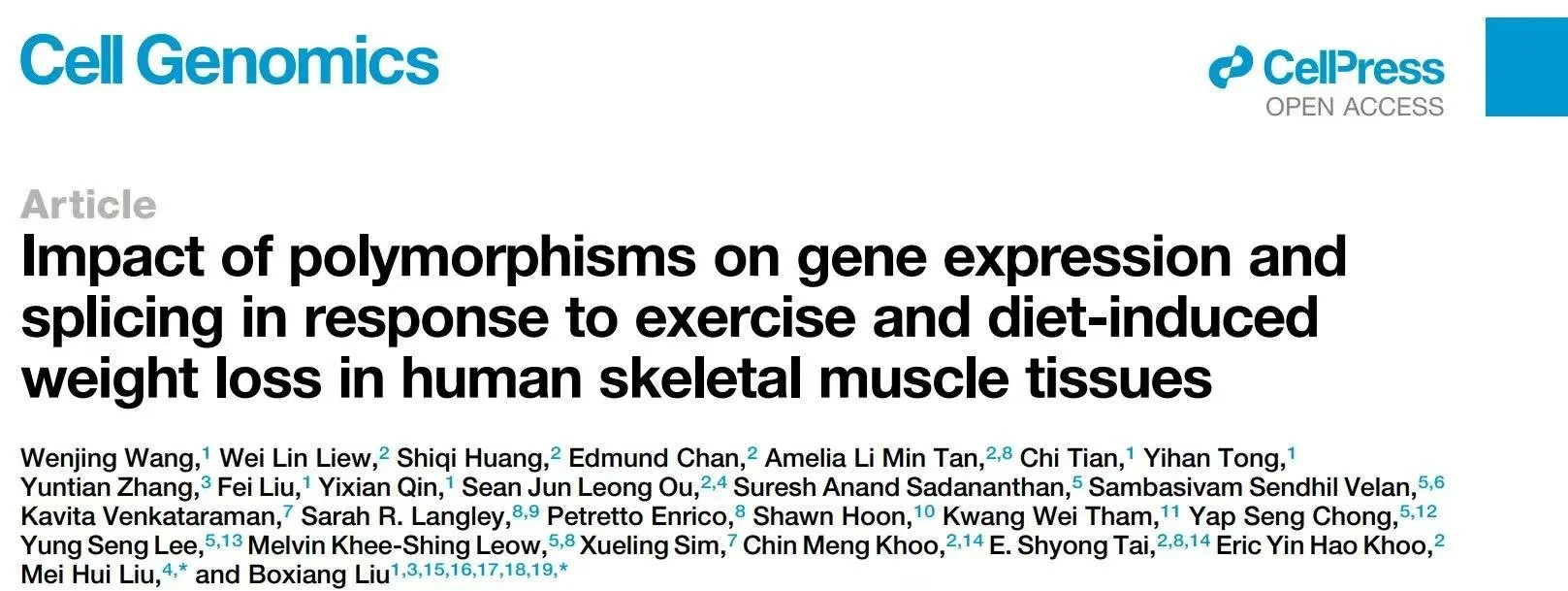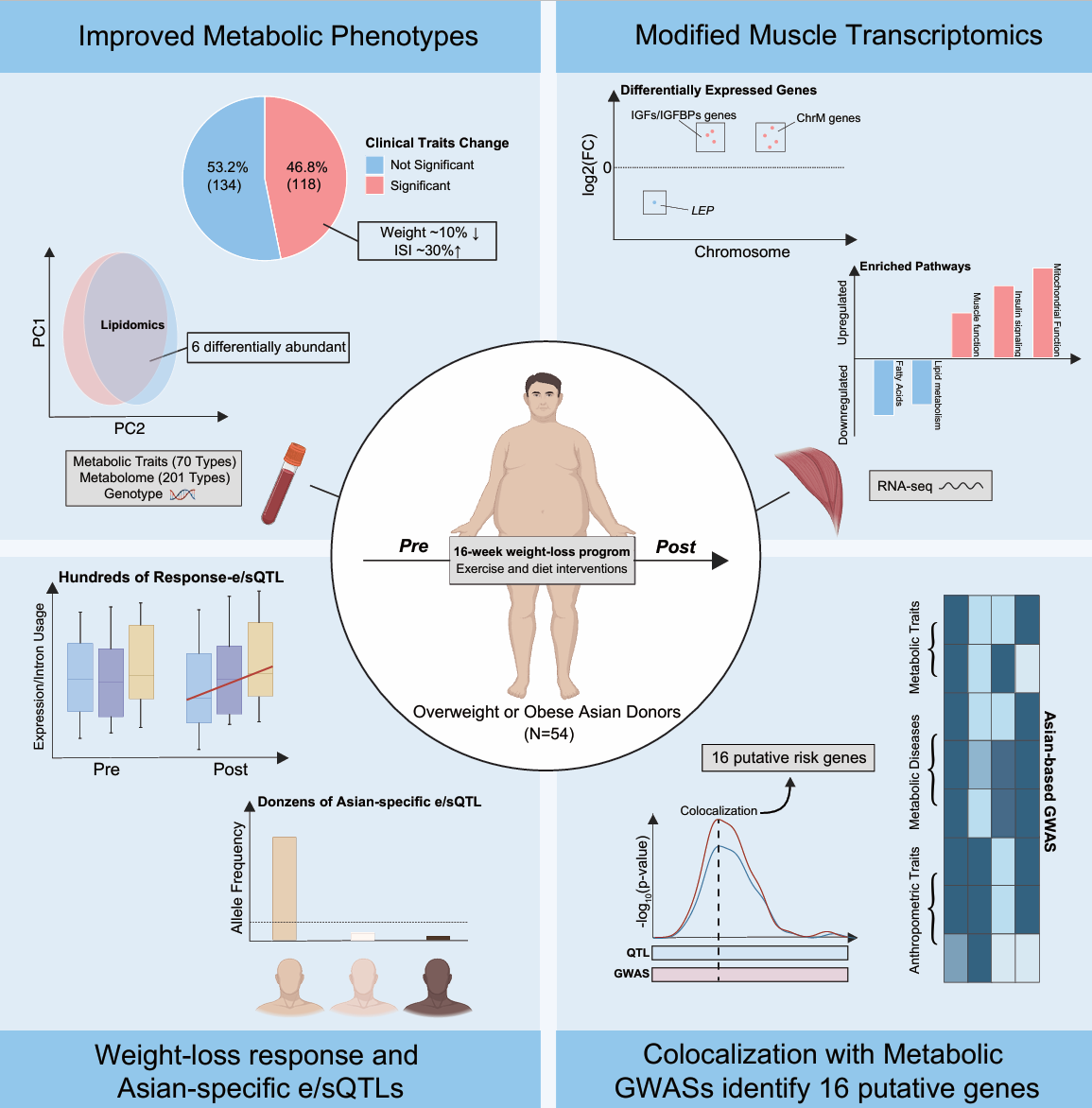Our New Publication: Cell Genomics
Highlights
•Conducted a 16-week lifestyle intervention in 54 East Asians with deep phenotyping
•Lifestyle reshapes muscle transcriptome via mitochondrial and insulin-related pathways
•Hundreds of lifestyle-responsive and dozens of Asian-specific e/sQTLs identified
•e/sQTL colocalization with Asian GWASs reveals 16 metabolic risk gene candidates
Summary
Weight loss through exercise and diet reduces the risk of type 2 diabetes, but the genetic regulation of gene expression and splicing in response to weight loss remains unclear in humans. We collected clinical data and skeletal muscle biopsies from 54 overweight/obese Asian individuals before and after a 16-week lifestyle intervention, which resulted in an average of ∼10% weight loss, accompanied by an ∼30% increase in insulin-stimulated glucose uptake. Improvements were observed in 118 of 252 clinical traits and six blood lipids. Transcriptomic analysis of paired skeletal muscle biopsies identified 505 differentially expressed genes enriched in mitochondrial function and insulin sensitivity. Thousands of muscle-specific expression/splicing quantitative trait loci (e/sQTLs) were detected pre- and post-intervention, including hundreds of lifestyle-responsive e/sQTLs. Notably, approximately 4.2% of eQTLs and 7.3% of sQTLs showed Asian specificity. Joint analysis with genome-wide association study (GWAS) identified 16 putative metabolic risk genes. Our study reveals gene-by-lifestyle interactions and how lifestyle modulates gene regulation in skeletal muscle.

